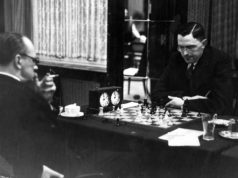1883
England recovered their series against Austalia in the form of a burnt bail in an urn. On August 29 1882, England not only were beaten by Australia for the first time in their own country but also lost their first Test Match in England. After the result, journalist Reginald Shirley wrote a mock obituary about the death of English cricket saying: “In affectionate remembrance of English cricket which died at The Oval, 29th August, 1882. The body will be cremated and the Ashes taken to Australia.” The Ashes was born on the back of these comments and England travelled out to Australia in December to “recover their Ashes.”
1929
Hugh Tayfield, South Africa’s greatest spin bowler, was born on this day. Tayfield had a habit of stubbing his toe into the ground before bowling, which gave him the nickname ‘Toey’. His most important match was against England in Johannesburg in 1956-57 when he took 9 wickets for 113 runs. He bowled continuously for 35 overs on the last day of the match. Tayfield preferred to bowl over the wicket, extremely close to the stumps, which gave him the perfect angle for the ball to drift away and break back.
1990
Mitchell Starc, one of Australia’s best left-arm seamer, was born on this day. With quick balls, Starc gets effective bounce from his 1.96m height. This makes the batsmen highly uncomfortable. Starc was at his best during the 2015 World Cup when he finished the joint-highest wicket-taker with 22 wickets and was named Man of the Tournament. He took three five-wicket hauls in his first 17 ODI matches. Starc is also an effective batsman.
1993
Curtly Ambrose displayed an extraordinary bowling spell when he took 7 wickets for 1 run in 32 balls against Australia at Perth. His haul reduced the Aussies from 85 for 2 wickets to 119 all out.
1994
Kapil Dev equalled Sir Richard Hadlee’s record of 431 Test wickets when he dismissed Don Anurasiri against Sri Lanka in Bangalore.




